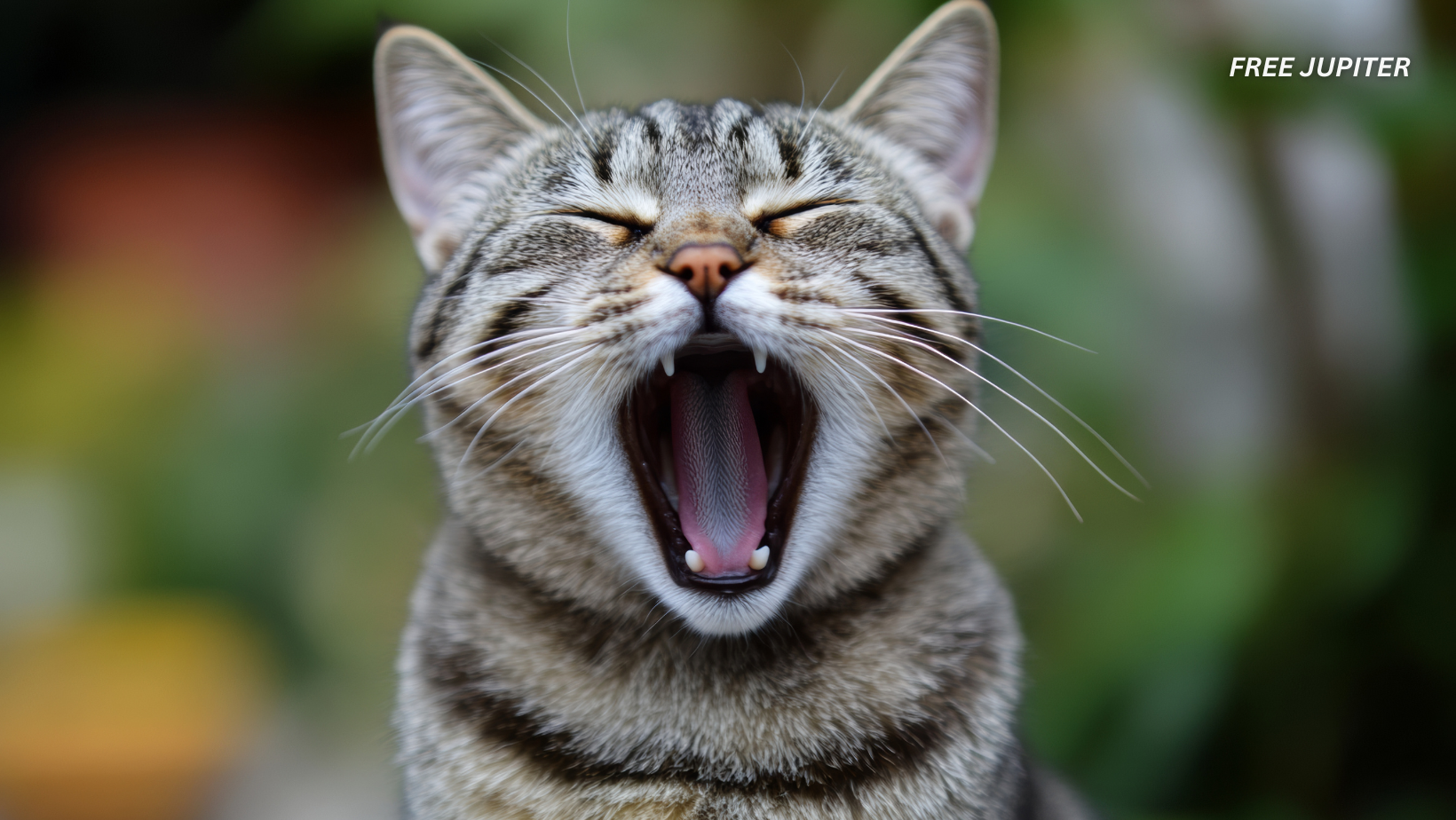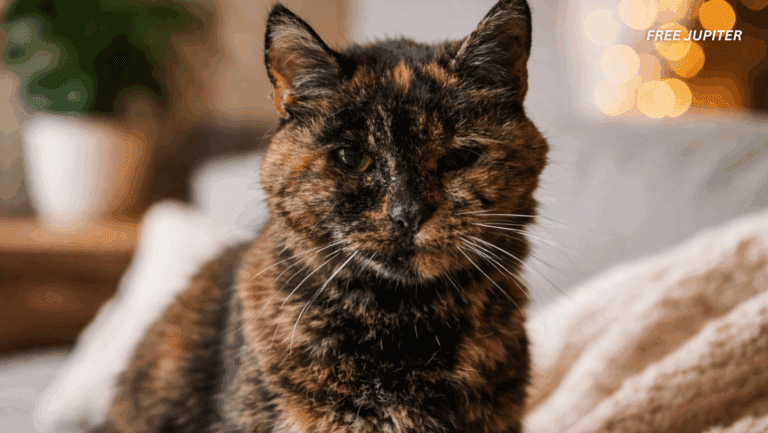Friendly Note: FreeJupiter.com shares general info for curious minds 🌟 Please fact-check all claims—and always check health matters with a professional 💙
After thousands of years of living alongside cats and still being confused by their mysterious meows, science may have finally caught up. Thanks to artificial intelligence, decoding your cat’s mood might soon be as simple as checking your phone.
Meow-to-English? It’s Actually Happening
A team of tech-savvy researchers, including some former engineers from Amazon’s Alexa project, have created an app called MeowTalk. It’s designed to do exactly what cat owners have always dreamed of—translate your cat’s meows into something humans can understand.
Using advanced machine learning, MeowTalk listens to your feline friend and matches the sound to one of several known vocal patterns. These aren’t just random noises, either. The app can identify whether your cat is hungry, lonely, content, or even demanding attention—with an impressive accuracy rate of up to 95%.
Turning Meows Into Meaning
Here’s how it works: when your cat meows, the sound is turned into a visual representation—sort of like a sound map or heat map. The AI then studies these maps the same way it would analyze an image, comparing the patterns against its ever-growing database of cat sounds.
Right now, the system can reliably detect 11 distinct feline messages, but researchers believe cats may actually use as many as 40 different vocal cues to communicate. Work is ongoing to train the AI to recognize and label even more of these subtle meow variations.
Read more: Scientists Say More Animals Are Conscious Than We Ever Imagined—Even Insects
12,000 Years Later, We’re Finally Getting Somewhere
Cats have lived with humans for around 12,000 years, and yet we’ve remained largely in the dark about what they’re actually trying to tell us. While dogs tend to wear their hearts on their paws, cats are much more cryptic. This new tech could change that.
Imagine getting a notification from your phone that says: “I’m bored. Play with me.” Or “Feed me. Now.” For cat owners, this could be a game-changer—not just for convenience, but for deepening that often one-sided human-cat relationship.
Not Just for Fun—It Could Help With Animal Welfare Too
Beyond just satisfying our curiosity, this kind of technology could also improve feline welfare. If we can better understand when a cat is distressed, sick, or unhappy, we can intervene more quickly. It’s like having a real-time emotional barometer for your pet.
The researchers behind MeowTalk envision a future where animal shelters and veterinary clinics use AI translators to better understand the emotional states of the cats in their care.
So, Are We Finally Talking to Cats?
Well, not talking exactly. But we are beginning to listen in a way that makes sense. While the idea of chatting with your cat like a Disney princess is still far-fetched, being able to tell the difference between a “feed me” meow and a “leave me alone” meow is a pretty solid start.
The project is still developing, and the app gets smarter the more meows it hears. In fact, MeowTalk allows users to help train the AI by labeling their own cats’ vocalizations, meaning your cat could become part of the research too.
So the next time your cat gives you that piercing stare and lets out a single, dramatic meow—your phone might actually know what it means.
Read more: Scientists Discover Animals Have a Mysterious ‘Sixth Sense’, Changing Evolutionary Theories
China’s Baidu Steps In With High-Tech Cat Whispering
If you thought MeowTalk was impressive, just wait until you hear what one of the world’s tech powerhouses is working on. Chinese tech giant Baidu, often referred to as “China’s Google,” has thrown its hat into the pet-translation ring—and their vision goes way beyond just decoding meows.
Baidu recently filed a patent for a cutting-edge, AI-driven system that aims to understand animal emotions and communication through a multimodal approach. This means it doesn’t just rely on sound—it combines meows, body language, tail movements, facial expressions, and even biometric data like heart rate and temperature to paint a much fuller picture of what your furry companion might be feeling.
Think of it like a high-tech cat interpreter with multiple senses—sort of a veterinary version of the Star Trek universal translator.
The Multimodal Revolution: More Than Just Sound
While earlier apps like MeowTalk focus mainly on vocal cues, Baidu’s approach acknowledges something animal behaviorists have long known: cats (and animals in general) communicate with their entire bodies.
- Tail twitches? Could signal agitation or curiosity.
- Ear position? Might hint at whether the cat is relaxed or on high alert.
- Pupil dilation, whisker position, breathing patterns? All these subtle cues add emotional depth.
Baidu’s system is designed to detect and process all of this, using sensors and image recognition powered by artificial intelligence. In practical terms, this could involve a wearable device, a smart collar, or even home-monitoring systems with cameras and motion detectors feeding data to the AI.
The goal? To create an intelligent system that doesn’t just recognize one signal, but interprets the full context—whether your cat is purring while limping, meowing in pain versus excitement, or showing early signs of illness that human eyes might miss.
Aiming for Two-Way Communication?
Perhaps the most eyebrow-raising aspect of Baidu’s patent is its stated ambition to develop two-way communication between humans and animals.
Now, before you imagine your cat texting you back, “Not now, human. I’m brooding,” let’s pump the brakes. The idea here isn’t full sentences or philosophical debates about the merits of salmon vs. chicken. Rather, Baidu hopes that by decoding the animal’s emotions and intentions, and matching them with appropriate pre-set human responses (like soothing sounds, gestures, or actions), we can begin to create something that feels a bit like a conversation.
For example:
- Cat appears anxious → device plays calming music or sends a notification to the owner
- Cat appears hungry → AI suggests feeding schedule adjustments
- Cat seems social → prompt appears encouraging playtime or interaction
In short, your cat might not speak English, but the AI could serve as a bilingual go-between—translating signals into actions you can take.
Still in Its Kitten Stage
Of course, this kind of tech is still very much in development. While Baidu has filed the patent and outlined the framework, the actual product is not yet on the market. There’s still a long road ahead when it comes to accuracy, reliability, and real-world application.
Experts caution that while the idea of “animal translation” is exciting, we shouldn’t confuse emotional detection with full-blown conversation. Language, in the human sense, involves syntax, abstraction, and culture. Animal communication is powerful—but fundamentally different.
That said, AI can still be a game-changer in helping us tune into the rich, nuanced signals animals already give us.
Why It Matters: More Than Just a Pet Gadget
The implications of Baidu’s system go far beyond cute cat apps.
- Veterinary clinics could use this technology to detect stress or illness early.
- Shelters and rescues could better understand animal needs, improving adoption and care.
- Pet owners might avoid miscommunications that lead to behavioral issues or missed signs of distress.
In essence, this could be the next leap forward in empathy-based pet care—where AI helps us see what our pets can’t say out loud.
The Future of Feline Communication?
We’re not quite at the point where your cat will remind you about your missed appointments or argue about bedtime snacks. But the idea that a device could someday tell you, with confidence, “Your cat is feeling neglected—go give them love,” is no longer science fiction.
If Baidu—and other innovators—succeed in building this kind of tech, we may finally understand what our pets have been trying to tell us all along.










